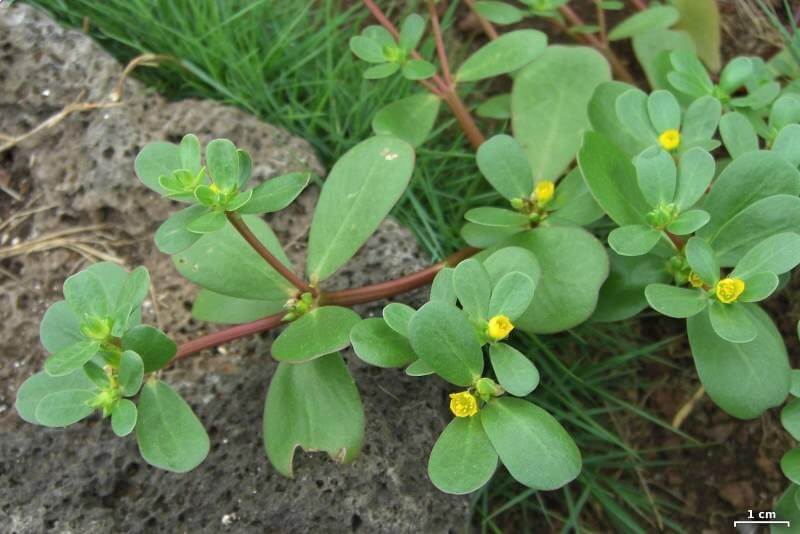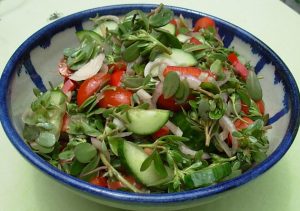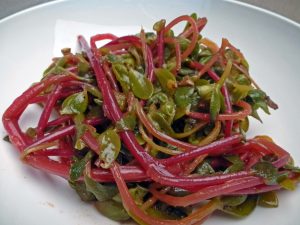What is Purslane or Portulaca?
Viewed as a prime nutritious vegetable in many places around the world. In North America, however, it’s commonly mistaken for a weed. It is time for purslane to get a little more recognition round these parts!
Purslane, scientifically known as “portulaca oleracea“, is a succulent plant often considered a weed but is highly nutritious and edible. It has fleshy leaves and stems, and is rich in omega-3 fatty acids, antioxidants, and various vitamins and minerals, making it a valuable addition to meals.

How to Identify Purslane
Purslane plants have sprawling growth habits and branching, thick, red stems. The wild variety tends to grow low to the ground, though occasionally plants send a few shoots upwards. If you plant purchased hybrid seeds, you may find they grow more upright. Purslane may grow up to 16 inches tall.
Technically a tropical perennial in zones 10-11, purslane grows as an annual in much of the world. However, its plentiful seeds mean that you will often find purslane plants cropping up in the same places in your garden year after year as they will self propagate. Farmers and gardeners may find this plant cropping up in their gardens. Don’t weed it, eat it!
 LEAVES
LEAVES
Purslane has smooth, fleshy leaves that are pretty recognizable. Leaves are elongated ovals with rounded tips and tend to appear in star-shaped clusters of 4 at the end of the stem branches. They’re smooth and grow in an alternate pattern. They will sometimes have reddish edges.
FLOWERS
Purslane has inconspicuous yellow flowers that bloom in midsummer. Each has 5 petals and measures about 1/4″ wide. Purslane flowers are edible.
SEEDS
Purslane flowers will eventually produce numerous pods filled with tiny black seeds that resemble poppy seeds. Purslane seeds are also edible, though quite inconvenient to collect.
 WHAT DOES PURSLANE TASTE LIKE?
WHAT DOES PURSLANE TASTE LIKE?
Purslane’s succulent stems and leaves are juicy and have a bit of a crunch. They typically have a sour flavor, which is more prominent in the stems. Sour foods like rhubarb and hibiscus are similar in taste. The stems can be a bit much in salads and stir fries, and tend to favor purslane leaves. Tougher and older leaves and stems are typically used in a stew or potherb blend.
When cooked, purslane’s high mucilage content can make your dish a little… well, slimy, so be forewarned if you’re planning a big purslane soup.
WHAT PARTS OF THE PURSLANE PLANT DO YOU EAT?
All above-ground parts of the purslane plant are edible: leaves, stems, flowers, seeds. You can snip off stems together with leaves and flowers and toss the whole lot in your smoothie. For salads, it is recommend to use the leaves and flowers.
